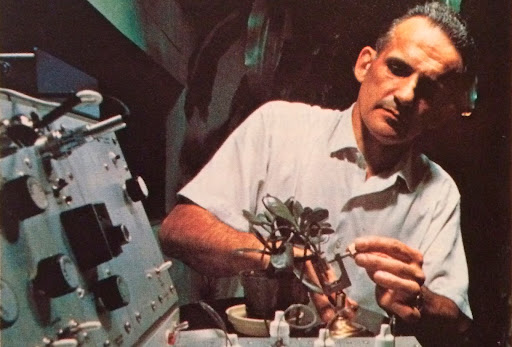In 1966, Cleve Backster, a renowned polygraph expert from the United States, spent another sleepless night at the school where he taught security officers how to use the polygraph machine.
After a while, just for fun, he decided to place the polygraph electrodes on his large-leaved tropical plant. The polygraph was designed to measure electrical changes in response to emotions like fear, joy, and surprise. Perhaps the plant would also be happy when watered, he thought, laughing at the idea.
When he watered the plant, the galvanometer’s needle dropped down in zigzag patterns, although he had expected an upward movement. However, when he dipped the plant’s leaf into hot coffee, no expected response occurred.
Things changed dramatically when he considered lighting a match and setting the plant on fire. The plant reacted wildly, causing the needle of the galvanometer to spike. Backster couldn’t believe it. “What does this mean?” he asked himself. “Did the plant read my thoughts?”
This experiment opened the door to a new world in human history. Backster began to discover that plants not only read thoughts but also sensed everything around them. They could feel the deaths of shrimp thrown into boiling water, the pain when a needle pricked his hand, and even joy and sadness from miles away. In some cases, plants even showed signs of fainting from fear.
One day, when a female botanist from out of town entered the laboratory, all the plants became silent. It was as if they suddenly went into a state of quiet. When the woman left the airport and boarded her plane, the plants began responding again, 45 minutes later. When Backster learned that the woman had dried the plants and taken measurements, he realized that the plants had fainted from fear when they saw her.
In another experiment, Backster assigned six of his assistants different tasks to perform that night. One of these tasks involved coming in at midnight to uproot and destroy one of the plants. The next day, when the assistant who had torn apart the plant entered the lab, all the plants began reacting wildly. Backster realized that plants not only felt but also had memories.
This discovery even led to the use of plants as witnesses in certain legal cases in America, because plants didn’t know how to lie.
These studies were published in a paper, sparking research from scientists around the world. The results were astonishing. A torn leaf could live much longer than a normal leaf when kind words were spoken to it. It could feel pain from 120 kilometers away, read people’s thoughts, and even record the memories of malicious individuals. Moreover, it could share this information with other plants.
Plants were sensitive enough to feel when a neighboring plant was thirsty and share their water with it. When treated poorly, they could die from sadness. They possess an extraordinary sensitivity far beyond what we might imagine for communicating with all living things.
Perhaps one day, by better understanding plants, we could learn the entire history of the world from them. In fact, the inspiration for the movie Avatar came from these experiments and the results they yielded.
Let us not forget that when a plant is mistreated anywhere in the world, all plants feel it.
